Email Marketing with Noah Kagan - Part 2
Last updated on January 2, 2023 at 13:52 PM.Anyone involved in content marketing knows that the World Wide Web is full of concentrated knowledge, expert tips and training on SEO and SEM, social media marketing, content strategies, link building and much more. But in everyday life there is often no time to follow all these digital experts and platforms. That’s why we created our blog series “Decoded”. Each post is dedicated to a different specialist and their input on a topic from online marketing. This time it’s the turn of email marketing expert Noah Kagan.

Email Marketing: The Best Tips from Noah Kagan - Part 2
Hardly any business can do without strategic email marketing. This important element in the customer journey enables you to generate leads that later turn into paying customers. But how do you get to the email addresses of your target group? How do you make them stand out from the multitude of emails your contacts receive every day? And how do you get them to click on the links in your newsletter? To find answers to these questions, let's look at the best email marketing ideas from digital expert Noah Kagan and his team at Sumo.com.
Noah Kagan has already had an impressive career in online marketing. He worked as No. 30 at Facebook and No. 4 at Fintech company Mint. In 2010, he founded Sumo, which provides free marketing tools to small businesses so they can increase their traffic. With these custom-built tools, he and his team could grow the mailing list for AppSumo to over one million subscribers. Noah has published guest articles in the Huffington Post, Forbes, and Apple News. He also shares his knowledge from personal experiences, studies conducted, and interviews with other digital experts in blog posts, YouTube videos, and podcasts.
By the way: You can find Noah Kagan's first five tips on email marketing in another article. The first two articles in the Decoded series focused on digital expert Neil Patel and his SEO hacks for better search engine rankings. In the third and fourth part, we looked at Michael Stelzner's tips for success in social media marketing.
Tip 6: Make time for the essentials - marketing automation through targeted workflows Part 2
In the first article on Noah Kagan, we already looked at three workflows for email marketing. Today, we'll introduce you to four more workflows. They help you define processes for different situations in sales and marketing and to automate the corresponding email sending. This way, it well takes your readers care of and you have time for other tasks.
Drive sales negotiations
We sell not only some products at fixed prices, but are part of an auction. Ash Read of Sumo cites the example of Uniregistry, a company that mediates between the owner of an Internet domain and a potential buyer. Through an automated e-mail workflow, Uniregistry moves price negotiations forward:
After a visitor asks about a domain, he or she receives an initial e-mail with information about the broker who handles it. Three days later, the interested party receives a simple text email with the price of the domain name and a request for a response. If there is no response, the company sends the prospect another email five days later encouraging him to contact them to negotiate the price.
Provided there is no response here either, the prospect receives further emails at increasingly longer intervals to trigger a response. At the end of each email, the "Click here to respond" call-to-action is included to make it as easy as possible for the reader.
Automate problem resolution in customer service
When interacting with existing customers, certain service issues may come up again and again, such as fixing a technical glitch or updating payment methods. To keep customers informed of the current status, you can also use marketing automation. Ash analyzed Netflix's email workflow for this purpose. In the first email, the streaming provider informs the customer that the payment was unsuccessful and asks the customer to update their payment methods via a link. A second email confirms the change of account data and invites the customer to the platform again with a call-to-action. Once the payment collection on Netflix's part has been successful, the customer receives a third email with the confirmation.
Ash recommends the following approach to this type of email workflow:
- Clearly identify the problem
- Include a simple step-by-step guide to resolve the issue
- Notify the customer once we resolve the issue
Use re-targeting email to bring back prospects
Re-targeting ads are one way you can bring prospects back to your offer. But this also works with an email workflow. AirBnB collects user data on its website: In which location is an accommodation searched, what type of accommodation, in which price category, on which dates, etc. Based on this individual search history, the platform emails the interested party a few hours later with suitable offers. About ten days later, an email follows with more suitable offers: the most popular accommodations in the respective city.
Reactivate former customers
If customers have purchased nothing from you for a while or have cancelled a paid service, you can try to reactivate these customers with the email workflow. LinkedIn sends a series of emails to former subscribers for its premium version, and each focuses on the various benefits.
The first email is about viewing profile visitors, the second is about InMails and LinkedIn Learning, and the third is about smart job search options. The sends are each accompanied by an invitation to try LinkedIn Premium for free for a month. As Ash notes, the professional network sends such emails to former customers every month, which recipients can quickly find annoying. Here, decide for yourself at what intervals you contact former customers.
Tip 7: Successful email marketing in the B2B sector - it should be short
Email marketing is not only excellent for the B2C sector, but also in B2B. However, there are different rules here:
- In B2B, mostly, several people in a company decide on an investment. The recipient of your email is not necessarily the decision maker.
- Because of the many people involved, the decision-making process also takes much longer than in B2C.
- Professional e-mails are usually opened during office hours, and sometimes on weekends in the case of home office employees. Therefore, conduct tests to determine the ideal sending time.
Understand your target audience
You should know your target group very well, as Bill Widmer from Sumo.com points out. You can find out, for example, with a short questionnaire that you send to your existing list:
- Why did you originally sign up for [brand name]'s newsletter?
- What can we help you with? OR How can we help you achieve your goals?
- Are you the owner of the business or an employee/freelancer?
Analyze the interests of your target audience(s)
Check out forums of professional associations and professional networks of your target audience to learn more about the topics that interest them. Another option: offer your subscribers a free phone call to learn how they can be more successful with their business. While giving them expert tips, you can learn more about their motivations during the conversation. The results will form the basis of your B2B email marketing.
Send value-added emails
Every element of your emails should add value, from the subject line to the specific offer.
- Be direct and get to the point quickly. After all, your email is just one of many that land in your subscribers' professional inboxes every day.
- Help your readers with clear CTAs like buttons and links.
- Keep images and videos to a minimum.
Test your approach
Bill from Sumo.com concludes by advising that you test your approach. The above B2B email marketing tips are recommendations. However, your target audience may like long stories and lots of images. By testing different approaches with your target audience, you will ultimately find the optimal form and achieve high open and click-through rates.
In the article "B2B E-mail Marketing: The Only Guide You'll Ever Need" you will find more tips on this topic. Bill Widmer also presents many examples of B2B e-mail campaigns.
Tip 8: Increase recipient engagement with confirmation emails.
One method Chief Sumo Noah Kagan still swears by is confirmation emails. They have some of the highest open and click-through rates. Why? After a user places an order, signs up for a newsletter or makes a booking, they want to know if they were successful. You can take advantage of this motivation: Add additional content to the automatically sent confirmation email to increase recipient engagement.
Sumo.com recommends the following as best practices:
- The confirmation email should be simple in design, consistent with your brand's corporate design, and in line with your communication guidelines.
- Explain to readers who have just signed up for your newsletter at what regular intervals they can expect what type of content.
- Use the number 3 (or 5) to alert the recipient to additional offers. With three choices, you avoid making the reader feel overwhelmed.
- Use the confirmation email to alert the recipient to additional free content that may interest them.
- Make the customer journey as seamless as possible by directing readers of the confirmation email to a landing page that includes only relevant information or content.
- Use social proof in your emails: opinions from customers, experts, and influencers build trust in your brand.
- Connect the confirmation email with opportunities to up-sell or cross-sell. However, be careful not to push too hard for another purchase.
If you want to know what such confirmation emails can look like specifically, check out the related post by Stefanos Bournias on Sumo.com: "How To Leverage Email Confirmations In 2021 For Explosive Growth". Here he shares ten of the best examples of confirmation emails from various companies. Noah Kagan's confirmation email for OkDork.com is also included.

What does Gerrit from Crispy Content® have to say about it?
"Noah Kagan's tips on email marketing are so valuable because he backs up his theses with numbers. For him, this is no art: His blog has immense reach, the leads in his email list match the products he sells, and: He sells digital products at scale. So his tips are not the result of any lab experiments, but first-class field research with subsequent empirical proof."
Creative, smart and talkative. Analytical, tech-savvy and hands-on. These are the ingredients for a content marketer at Crispy Content® - whether he or she is a content strategist, content creator, SEO expert, performance marketer or topic expert. Our content marketers are "T-Shaped Marketers". They have a broad range of knowledge paired with in-depth knowledge and skills in a single area.
More topics you might like

The Epic Split: Why B2B and Brand Are Not Opposites
Creative B2B branding that builds relevance, attention and trust. Why brand, culture and emotions matter in modern B2B marketing.

Strategically Designing Topic Worlds for Personal Brands in ...
How topic worlds for personal brands in B2B drive clarity, reach, and impact.

AI Competence Over Tool Overkill: The Path to True Content E...
How content expertise takes brand communication to the next level — with practical, actionable recommendations.

Service-as-a-Software: When the Machine Does the Job
Automated AI services are redefining B2B marketing: greater efficiency, new governance challenges — everything you need to know.

1,000 AI Agents And One Employee
Discover how AI agents are reshaping organizations and how to bridge the gap between technology and your workforce.

The End of Inbound Marketing as We Know It
Why inbound marketing is reaching its limits for B2B service providers and which channels decision-makers truly use today.

AI Assistants vs. AI Agents: The New Autonomy
How autonomous AI agents and no-code platforms are automating marketing processes and unlocking new potential.
.png)
Why Reach Alone No Longer Convinces
Platform rules end mass outreach: Why content strategies are now the key differentiator in B2B marketing.

Agents, Not Ads: Browsers Are Transforming Marketing Strateg...
Agent-based browsers are disrupting traditional content strategies. Discover how organizations can adapt and capitalize on emerging opportunities.

How AI Competence Is Becoming a Corporate Imperative
The AI Act requires companies to develop the AI skills of their own employees from 2025. Here's how they can succeed.

The Signal in The Noise: How Brands Ensure Relevance And Imp...
How content marketing works despite the digital noise: strategies for agencies, companies, and decision-makers in the digital age.

Why Most AI Tests Don’t Deliver Reliable Results
Why "AI experts" should stop spreading misinformation: a realistic comparison between research and AI tools.

How Products Become Content Engines For B2B Brands
How B2B brands are leveraging product-driven content for innovative brand communication and activating communities.

Generative AI: A Crisis of Trust for Agencies and Enterprise...
How AI-driven errors are reshaping agency workflows and which methods secure trust and quality. Deloitte case study, trends, and practical tips.

Google Update: Removal of &num=100 and Its Impact on SEO...
Google Update 2025: The deactivation of &num=100 transforms SEO tools, reporting, and AI data. Here’s how industries and businesses are responding.

B2B Reach: Strategic Partnerships over Content Production Li...
How brands gain visibility: Partnerships and user-generated content are replacing traditional content strategies in B2B. Learn more now.

Germany’s Data Protection Utopia: A Basement Full of Illusio...
Germany’s data protection utopia: Why basement LLMs are pure illusion – and how pragmatic rules can safeguard innovation and competitiveness.

Content Strategy for Strong Brand Perception
Discover how strategic content shapes brand perception, strengthens loyalty, and drives measurable growth across all channels.
Success of Viral Marketing Campaigns Without AI
The greatest campaign successes are based on emotion, social dynamics, and the courage to experiment. Discover how brands create genuine attention.

Content Marketing 2025: Opportunities, Risks and the Evolvin...
How AI is transforming content marketing and how businesses can safeguard quality, differentiation, and trust.
.jpg)
Enablement for Marketing Teams: Securing the Future with AI ...
Enablement equips marketing teams for AI and digitalization. Discover how structured development enables real transformation.

Content Strategy 2025: Uniting Quality and AI in Marketing
How companies use AI, content audits, and governance to implement sustainable content strategies and avoid content chaos.
-1.jpg)
GPT-5 in Practice: What the Data Says About Content Quality
GPT-5 testing proves fewer errors and more consistency. Discover how your content production can benefit today.

Achieve Greater Reach with Existing Content
How companies can achieve greater reach and efficiency by leveraging existing content—complete with real-world examples and a step-by-step guide.
-1.jpg)
Digital Trust: Standing Out from Generic Content with Qualit...
Strengthen digital trust: How companies can win with quality and transparency instead of generic AI content. Tips and real-world examples.
.jpg)
Cultural Adaptation: Successful International Brand Communic...
Cultural adaptation boosts the impact of international marketing campaigns. How can it be achieved in practice? Expert insights & best practices.

AI Image Generation: Practical Insights for Marketing Teams
How AI image generation with Midjourney is transforming marketing. Insights, opportunities, and practical tips for modern communication teams.

Communication Challenge: Making Expertise Visible in B2B Mar...
Discover how companies can make their expertise visible in brand communication and optimize their B2B marketing strategy.

Successfully Implement Content Strategies: Your Guide
Translate strategies into marketing and content formats: How to make your communication more impactful. A practical guide for decision-makers.
.jpg)
AI Marketing Consulting: Automation in the MarTech Ecosystem
AI marketing consulting, no-code platforms & workflow automation: Achieve a smart transformation in the MarTech ecosystem.

Clear ROI: Controlling Marketing Budgets with Metrics
Marketing clarity: How to secure budgets with KPIs and prove impact. Practical, data-driven, and tailored for marketing decision-makers.

Demand Gen Before the Comparison Phase: Gaining a Competitiv...
Discover how early-stage demand generation empowers B2B brands to enter new markets efficiently and reduce lead costs.

Marketing Departments: Combining Human Expertise and Technol...
How marketing teams scale efficiently: combining human expertise and automation for real impact. Practical examples and first steps included.

Efficient Transformation in Marketing: Escaping the Resource...
Rising demands, static teams: How to approach marketing transformation in a structured and successful way – including a real-life example.

Modular Content – Boosting Marketing Efficiency
Modular content helps marketing teams save budget and effort. Here's how to increase efficiency and consistency in communication projects.

Knowledge Retention in B2B Marketing: Methods & Tools
How to retain knowledge in B2B marketing. Practical tips on processes, tools, and learning culture. More efficiency for your team.

Using Storytelling Frameworks to Cut Through the Noise
How to increase B2B content effectiveness with structured storytelling – practical insights for immediate use

Work More Efficiently: Master System Diversity in Marketing
System diversity slows down marketing teams. Here’s how to make your infrastructure more productive and future-proof.

Structure Drives Performance: Clear Roles Ensure Content Qua...
Structured teams ensure content quality: How to strengthen accountability and output in your marketing organization.

Work More Efficiently: How Clear Standards Help Marketing Te...
How marketing teams save time, ensure quality, and grow internationally with clear standards: The first step toward a scalable content factory.

How The Content Factory Solves Major Marketing Issues
Build a high-impact content team with the “Content Factory” framework—solve budget, talent & execution gaps through structured marketing processes.

Is the B2B Buying Cycle Really More Complex?
Discover why the fundamental B2B buying process remains unchanged despite new digital touchpoints, and how to leverage this for effective strategies.

How to Make Technical Content Work for Decision-Makers
Transform complex technical content into engaging, strategic insights that resonate with decision-makers in industrial, tech, and B2B sectors.
.jpg)
Maximizing ROI from Thought Leadership Content
Learn how to turn thought leadership content into a measurable business asset that drives trust, engagement, and conversions.

Top 5 Criteria for Choosing the Right Content in B2B Marketi...
Discover the 5 key criteria for selecting the right B2B content formats. Learn how to tailor your strategy to personas, touchpoints, and goals.

AI and Cultural Expertise for Your Marketing Organization
This post explains why the right mix of technology and cultural know-how is indispensable when utilizing Artificial Intelligence.

AI Tools For Content Creator
Explore Crispy Content's AI integration strategy that enhances content creation while preserving human creativity and control.

How Our Content Marketing Strategies Drive Brand Awareness, ...
Discover how our content marketing strategies drive brand awareness, boost traffic, generate leads, and improve sales outcomes.

Master the Art of Content Strategy for Business Success
Unlock the secrets to developing a content strategy that aligns with your goals, addresses audience needs, and elevates your brand authority.

Webinar: Building An AI Content Machine
Discover how AI transforms content production strategies. Register for our free webinar with AI experts Gerrit Grunert and Jens Palm on November 28th!

How Pharmaceutical Companies Optimize Their Marketing with A...
Discover in our latest blog how pharmaceutical companies can optimize their marketing retainer with the help of AI.
.jpg)
Webinar: Building An AI Marketing Machine
Explore the transformative power of AI in B2B marketing with our webinar "Building an AI Marketing Machine" in cooperation with Salesforce and factory42!

Mastering LinkedIn's Labyrinth: Unveiling Algorithm Secrets
Unlock LinkedIn's potential with our guide. Discover algorithm secrets, optimize content strategy, and learn about future trends.

Revolutionizing Content Creation: The 6 Best AI Tools for Wr...
Discover out top 6 AI tools transforming content creation. Enhance your writing process and quality with AI technology – don't miss this opportunity!

Unleashing the Power of Ecommerce SEO
Unleash the Power of Ecommerce SEO: Fix broken links, optimize content, dominate Google rankings, and attract eager customers.
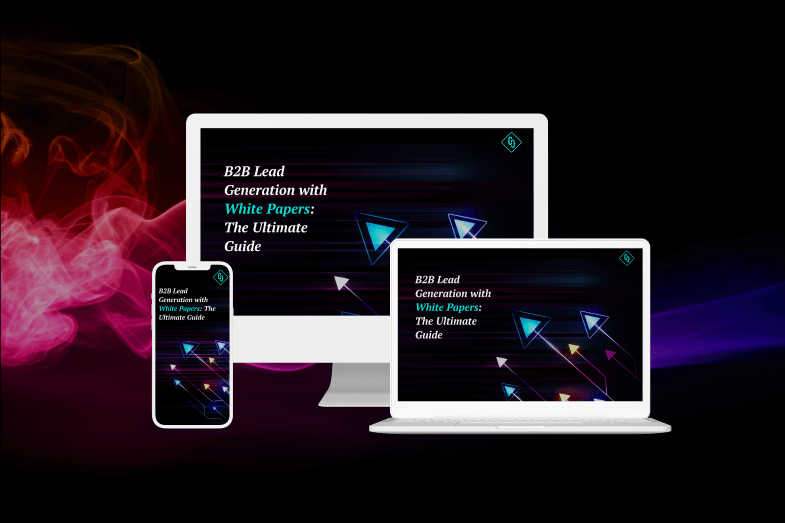
B2B Lead Generation with White Papers
Lead generation with white papers is one of the most effective sales measures in B2B business. Why? We explain that in this article!

The Content Audit - Part 2
In part two of our mini-series, we explain our 4-step road map to our successful content audit resulting in higher rankings in search engines.

The Content Audit - Part 1
In this article we show you just how important a content audit is, how SEO cannot live without good content, and why you need to check in regularly.

The Paid Media Audit - Part 2
In second article of our mini series we show you how to audit your paid media in seven thorough steps.

The Paid Media Audit - Part 1
In this article we take a look at how paid advertisement works, the different approaches of a Paid Media Audit, and which tools can help you up your game.

The CRM Audit - Part 2
In the second part of this mini-series, we'll show you how to perform a CRM audit and get more ROI from your data in seven easy steps.

The CRM Audit - Part 1
In the first part of this mini-series we explain what a CRM audit is, what the benefits are, and which tools to use.

The benefits of a successful pitch-workshop
Our idea of a good workshop consists of six outcomes that must be achieved at the end of a succesful pitch workshop. Discover them here.

Why regular agency pitches don’t work
11 reasons why agency pitches fail to do what they’re designed to do: to choose the right agency for the job – and our proven solution for it.

How to host a perfect pitch-workshop
A workshop instead of a standard pitch? In this article, we explain how to host a perfect pitch-workshop and show the benefits.

SEO For Pharma Companies: Why There is No Way Around It
Pharmaceutical companies, whose products are so in need of explanation and demand, cannot do without SEO. We show why this is so.

HubSpot History: What Made HubSpot a Success
The history of HubSpot shows how it became one of the most popular and demanded marketing software to date. Let's dive into it!

Content-Marketing For Pharma Companies
Nowadays, no pharmaceutical company can afford not to communicate with its target group. In our article, we show why this is the case.

Crispy Content® is looking for a Senior Content Team
Crispy Content® is looking for a Senior Content Strategist (m/f/d) and a Senior Project Manager (m/f/d).

Decoded: Content Marketing and SEO with Brian Dean - Part 2
The best hacks from SEO genius Brian Dean: Learn which strategies you can use to improve your ranking and create gripping online videos.

Decoded: Content Marketing and SEO with Brian Dean – Part 1
The best hacks from SEO genius Brian Dean: Learn which strategies work best for content marketing, PR and landing pages.

TikTok Marketing: 6 Reasons B2B Brands Should Use It
TikTok is one of the quickest growing social media platforms at the moment. We show you 6 reasons why B2B brands should use it too.

Decoded: Content Marketing with Gary Vaynerchuk – Part 2
Learning from the "Content God" - Part 2: Learn from GaryVee which social media strategies will make you successful in 2021.

Decoded: Content Marketing with Gary Vaynerchuk – Part 1
Learn from the "Content God": Find out how GaryVee reaches millions of fans with micro-content, storytelling and an authentic brand - part 2 follows.

An Entrepreneur's Guide to Social Media Management Software
Still wondering what sets social media pros apart from the rest? Social media management software they pay for. We list the ones that are worth to pay for.

Email Marketing with Noah Kagan - Part 2
Do you want to generate leads and more sales through effective email marketing? Discover tips 6 to 8 from online marketing expert Noah Kagan.

Email Marketing with Noah Kagan - Part 1
Want more leads and sales through effective email marketing? Discover the first 5 tips from online marketing expert Noah Kagan - part 2 follows.

The Customer Journey
In "Content Marketing 101" Crispy Content® highlights the most important topics in Content Marketing – here we focus on the customer journey.

The Conversion Funnel
In "Content Marketing 101" Crispy Content® highlights the most important topics in Content Marketing – here we focus on the conversion funnel.

The 7 Steps SEO Audit
In this article, content marketing expert Gerrit Grunert from Crispy Content® shows how anyone can perform an SEO audit in 7 steps.

Content Marketing Decoded: Social Media Examiner – Part 2
You want to improve your performance on Facebook, Instagram, LinkedIn and TikTok? Discover 6 practical tips from Social Media Examiner Michael Stelzner.
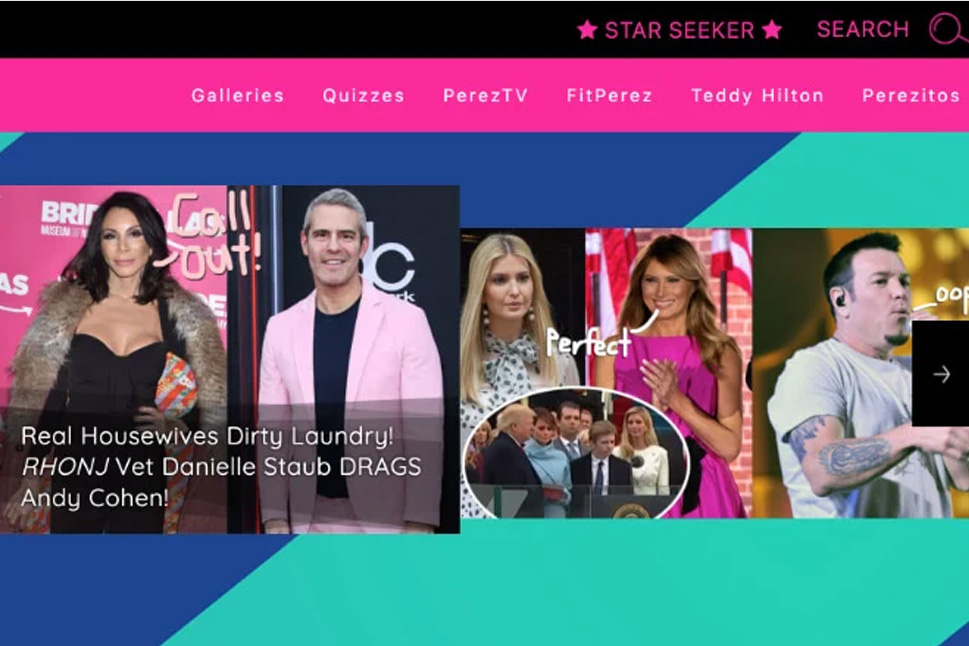
Successful Blogging: 14 Effective Example – Part 2
Blog success factors, blog millionaires and your next steps - all this in the second part of our little series on "Successful Blogging".

Successful Blogging: 14 Effective Example – Part 1
We have collected 14 blog examples that have been successful over the last six years. And we have investigated why this is so. Here comes part 1!

Content Marketing Decoded: Social Media Examiner – Part 1
Looking for ideas for your marketing on Facebook, Instagram, LinkedIn and TikTok? Discover 7 practical tips from Social Media Examiner Michael Stelzner.

Content Marketing Decoded: The SEO Hacks of Neil Patel
You want to improve the search engine ranking of your website? In our series we present the most important SEO tips from digital expert Neil Patel.
.jpg)
FREE Online Course: “Making Content” (7 Lessons)
An online course with 7 lessons to produce high-quality digital content – quickly, easily and affordably.

10 Steps For Your Perfect Website Content Strategy – Pt. 2
A guide for content marketers who want to develop a website content strategy. The second part deals with features, structures, keywords and governance.

10 Steps For Your Perfect Website Content Strategy – Pt. 1
A two-part guide for content marketers relaunching a website. The first part deals with goals, target groups, positioning, topics and formats.

15 Content Tools We Still Use | Part 2
We present the tools we use at Crispy Content® to realize content production. Today: Content Production and Content Distribution.

15 Content Tools We Still Use | Part 1
We present the tools we use at Crispy Content® to realize content production. Today: Content Discovery and Content Planning.

Post COVID-19: Reasons Germany will be Your Next Best Market
There will be a future after COVID-19 - and it probably looks more promising in Germany than in most countries of the world. We show you why!

How to Do Content Production for Blogs with Airtable
In this detailed overview, we explain how complex content production projects can be completed with Airtable.

"Car dealerships need social media marketing"
The car industry has been severely affected by the corona crisis. Gerrit gives tips on how the crisis can be used as an opportunity with social media.

Content Marketing Agency - 10 Lessons Across 10 Years
With our ten lessons from ten years as a content marketing agency you can save time, money and stress by reading this now!

Gerrit Grunert: A HubSpot Interview with CIO Applications
What does an international company have to consider when choosing a German HubSpot partner? Gerrit Grunert reveals this in an interview. Read it now!

SEO in Real Life
Here we explain how Google works with a small, real-life theater game from our SEO workshop. Learn more here!

How To Create A Persona
Why are personas important for content marketing? How many do you need? Read about this and more in Gerrit's new book "Methodical Content Marketing".

The digital transformation of the PR Agency
How can PR agencies embrace the digital? This article by Crispy Content® reveals how PR agencies can master digital transformation in 4 easy steps.
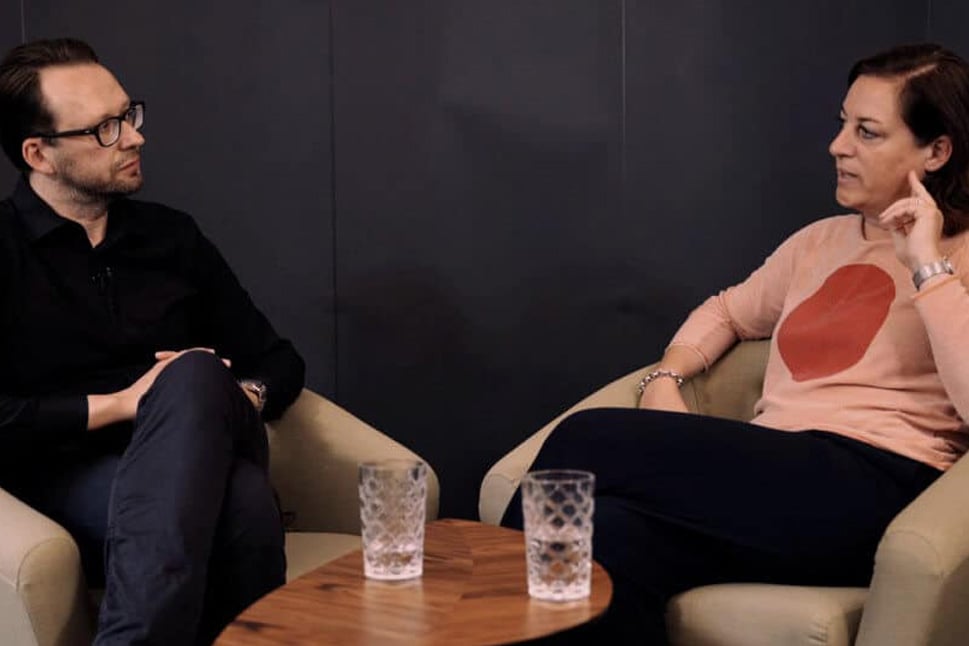
An Interview with Sandra Harzer-Kux from Territory
Sandra Harzer-Kux, Managing Director of Germany's leading brand content agency, Territory, in an interview with Gerrit Grunert.

Campaign Management 101: Campaign Layering
Ever wondered how you can convey brand values in a more creative way across multiple platforms? This blog provides an intro campaign layering.

Methodical Content Marketing: Persona Pt. 1
What advantages does persona development have for both sales and marketing teams? What can they add to content marketing? Read more about this works.

Reputation Marketing and ROI
Reputation management has ROI? Yes! And it should be considered reputation marketing instead! How does this work? Read more in this blog to find out!
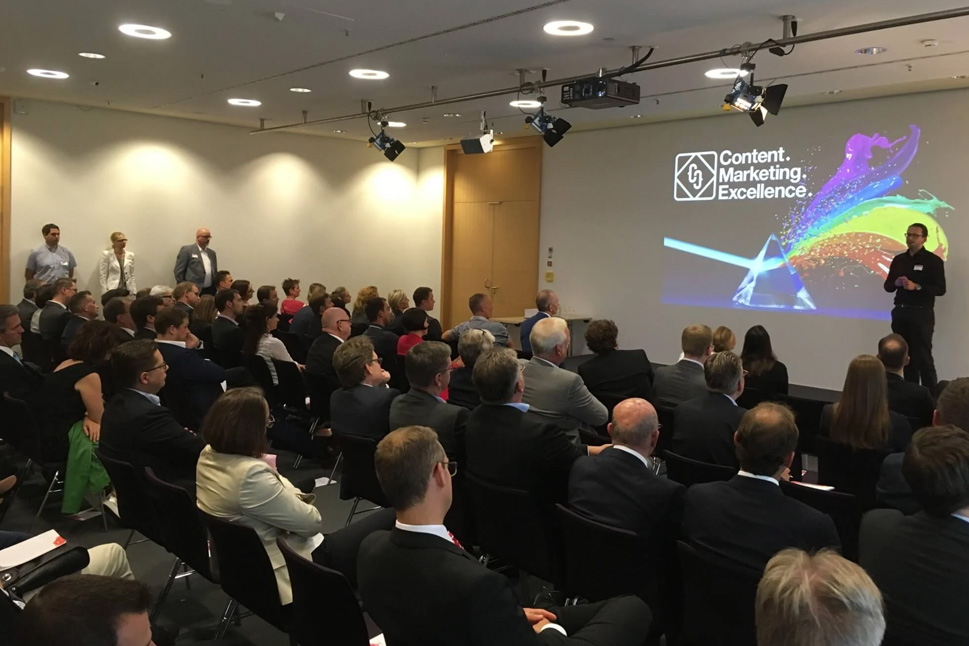
How Much Does A Content Marketing Strategy Cost?
How much does a content marketing strategy cost? Which aspects go into developing a strategy? The content experts at Crispy Content® break this down.
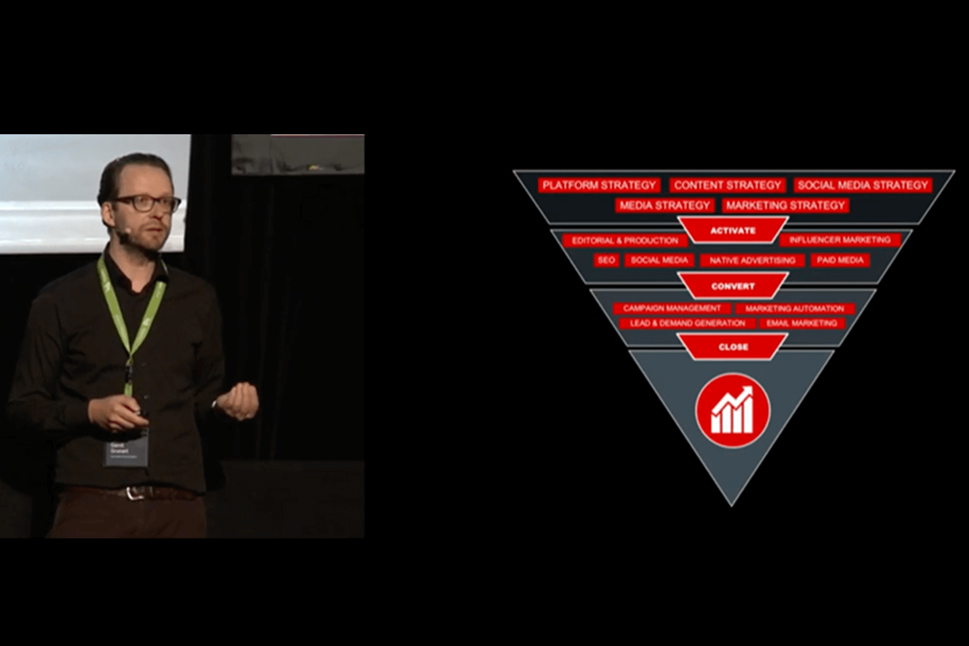
Mo' Money, No Problems – from Searchmetrics Summit 2017
How you can use an optimized customer journey to win over customers and many other topics in our Live Show from Searchmetrics Summit 2017!

Marketing Automation – From Persona to Personalization
Buyer personas are important, but how should you get your message across to individual users? Personalization is the key.

Checklist: Competitiveness Analysis in Content Marketing
Only those with an eye on the competitiveness can position their content marketing strategy successfully. Here’s a handy checklist.

Return On Content Marketing Investment
You’ve invested in a content marketing strategy – but has it been worth it? We show you how to calculate the ROI for your content marketing.

Conversion Optimisation in Content Marketing
In this blog post, we show you how to optimise your conversion rate within your lead generation activities.
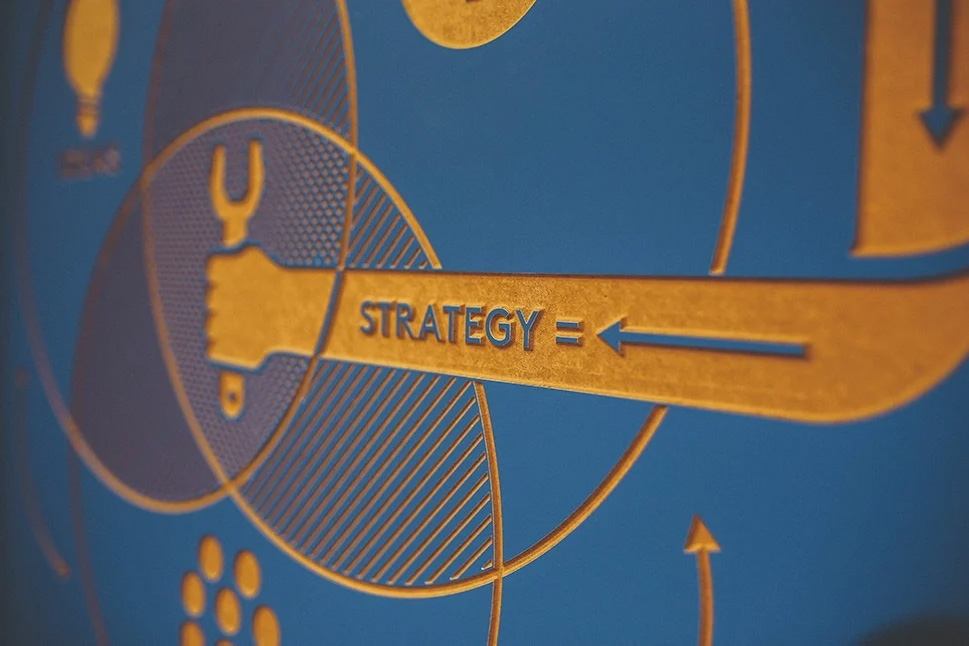
Content Marketing: From Strategy to Campaign and Back Again
Campaigns are the beating heart of a content marketing strategy, not merely the icing on the cake. Here’s a recipe to try “at home”.

How to Find the Right Content Marketing Agency
Finding the right content marketing agency can be tricky. These are our insider tips:

Predictive Lead Scoring – A Glimpse Into the Future
Predictive lead scoring builds on traditional methods, but exploits the possibilities of modern technology much more effectively. We show, how it's done!

Big Data in Content Marketing
Here, you can learn why big data is so important to your marketing activities and how your company can best process user-generated data masses.

How to Create a Content Marketing Strategy
Those wishing to invest in content marketing require a tailored strategy. In six easy stages, we show you how to get one.

Lead Scoring: The Highest Form of B2B Marketing
We show you how to use lead scoring to evaluate potential customers more effectively and bridge the gap between marketing and sales.

Next Level Lead Nurturing
Turning leads into customers requires a care, time and a suitable strategy. Lead nurturing accelerates this process significantly.

Outstrip Your E-Commerce Competition
How can online retailers steer the purchase decisions of potential customers – in all phases of the buyer's journey?

The 3 Biggest Content Marketing Pitfalls
Bad content marketing is often marked by the same recurring errors – three of which are particularly severe.

Storytelling: Why the Brain loves Stories
Storytelling and mirror neurons? We explain how to use neuroscientific research to tell stories that will delight your customers.

7 Email Marketing Trends You Should Know
Those who allow email marketing trends to pass them by will soon be watching the competition do the same. It's essential to keep these 7 points in mind.

Conventional Marketing Doesn't Work On Millennials
Millennials have announced it loud and clear: content marketing is the best way for marketers to reach their goals.

Why insurance companies should practice content marketing
How do insurance companies integrate content marketing into their marketing strategy?
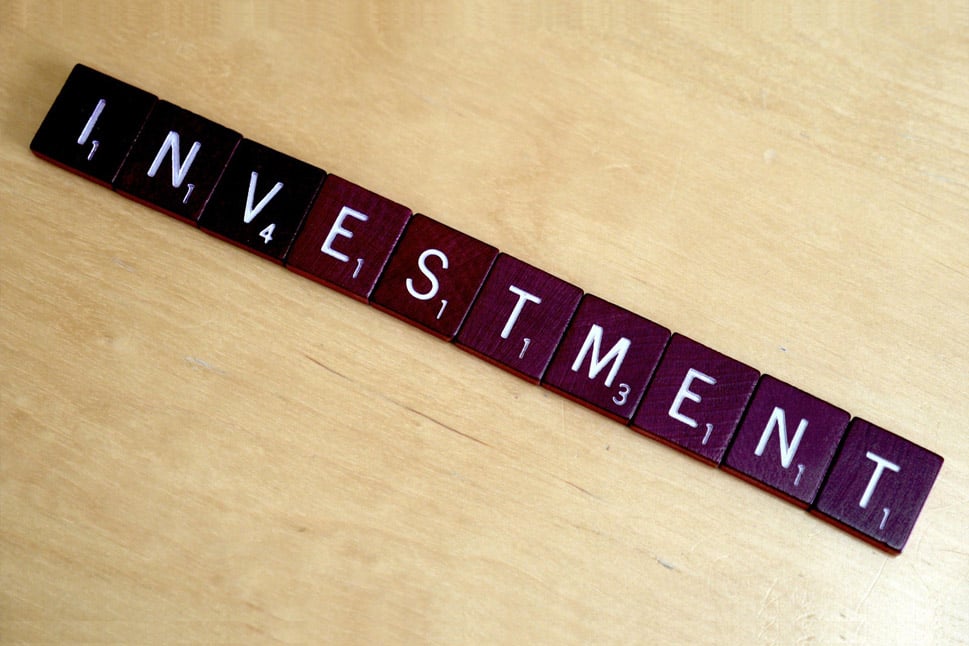
Content Marketing For Financial Services Providers
How important is content marketing to companies that deal with insurance, investment and financing and which strategies do they pursue?

Off-page analysis: Quality & quantity keywords
We’ll show you which SEO data is important for your keyword strategy and how you can benefit from your competitors’ success.

5 reasons hotel chains should practice content marketing
The Crispy Content Sector Review shows that hotel groups are still neglecting content marketing.

Six building blocks for successful localisation
We have created a checklist of the six building blocks of a high quality full service localisation.

4 reasons tour operators should practice content marketing
In our Crispy Content Sector Review we examine what companies within a specific sector can achieve with content marketing.

7 easy steps to the perfect long tail keyword
How can you improve your ranking efficiently and sustainably without spending money on it? We’ll show you how!

Storytelling competence: How to spot marketing talents
How can you even tell if an agency or freelancer can offer the required storytelling potential? We have compiled the key indicators for you!
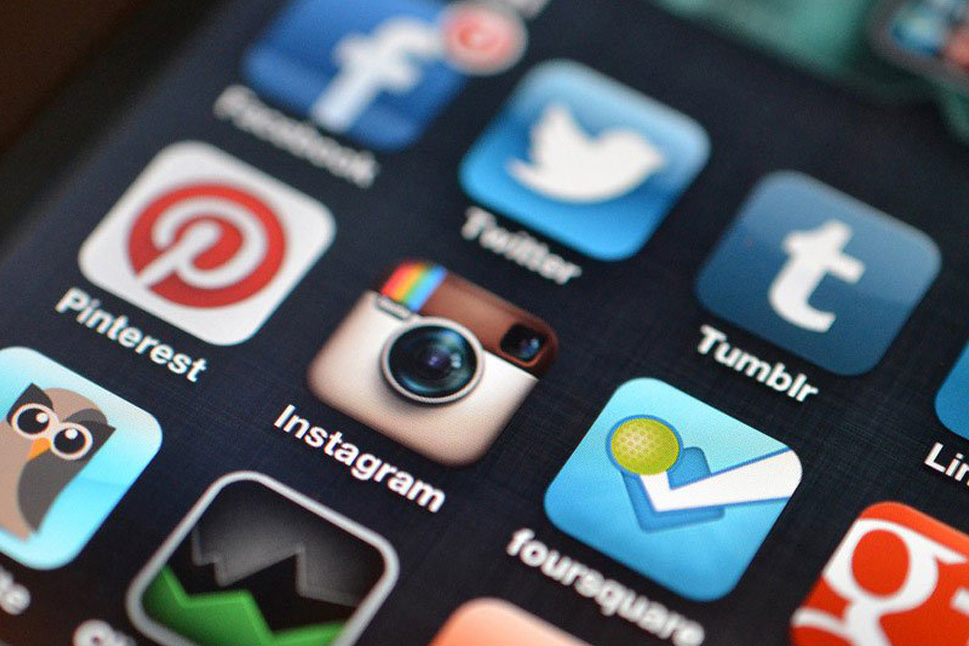
Content Marketing on Instagram: 5 successful examples
We’ll show you how to realise your brand’s content marketing strategy using Instagram.

Content Marketing: 9 tips for a successful blog promotion
Networking, Social Media Marketing and Reposting: That's how you seed your Blog Content!
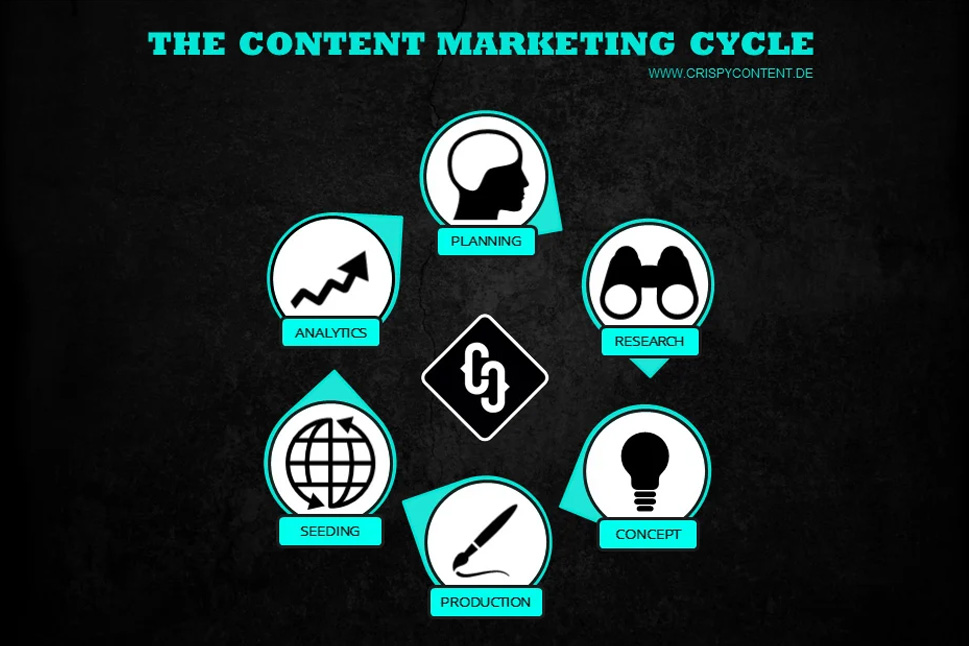
Your successful content marketing cycle in 6 steps
These 6 steps will help you develop your very own content marketing cycle.


![[FREE Ebook] Content Marketing Tools Essentials](https://no-cache.hubspot.com/cta/default/463294/02a763e7-df79-4758-ba35-000e19399736.png)